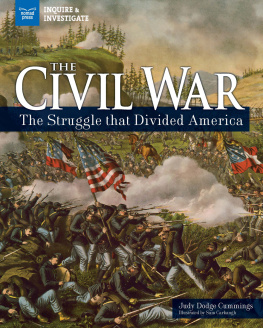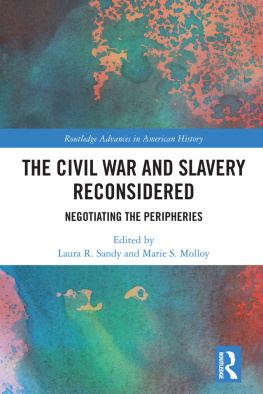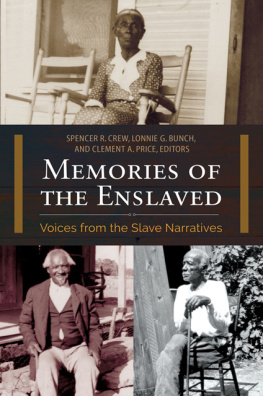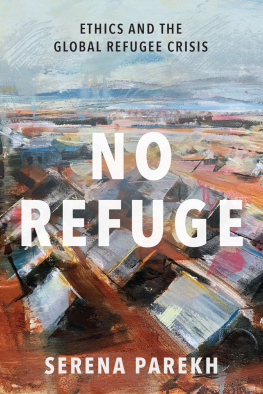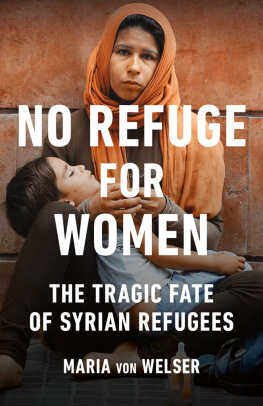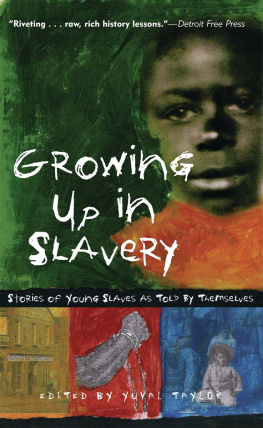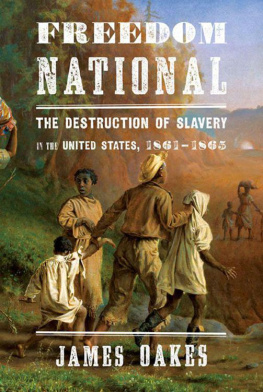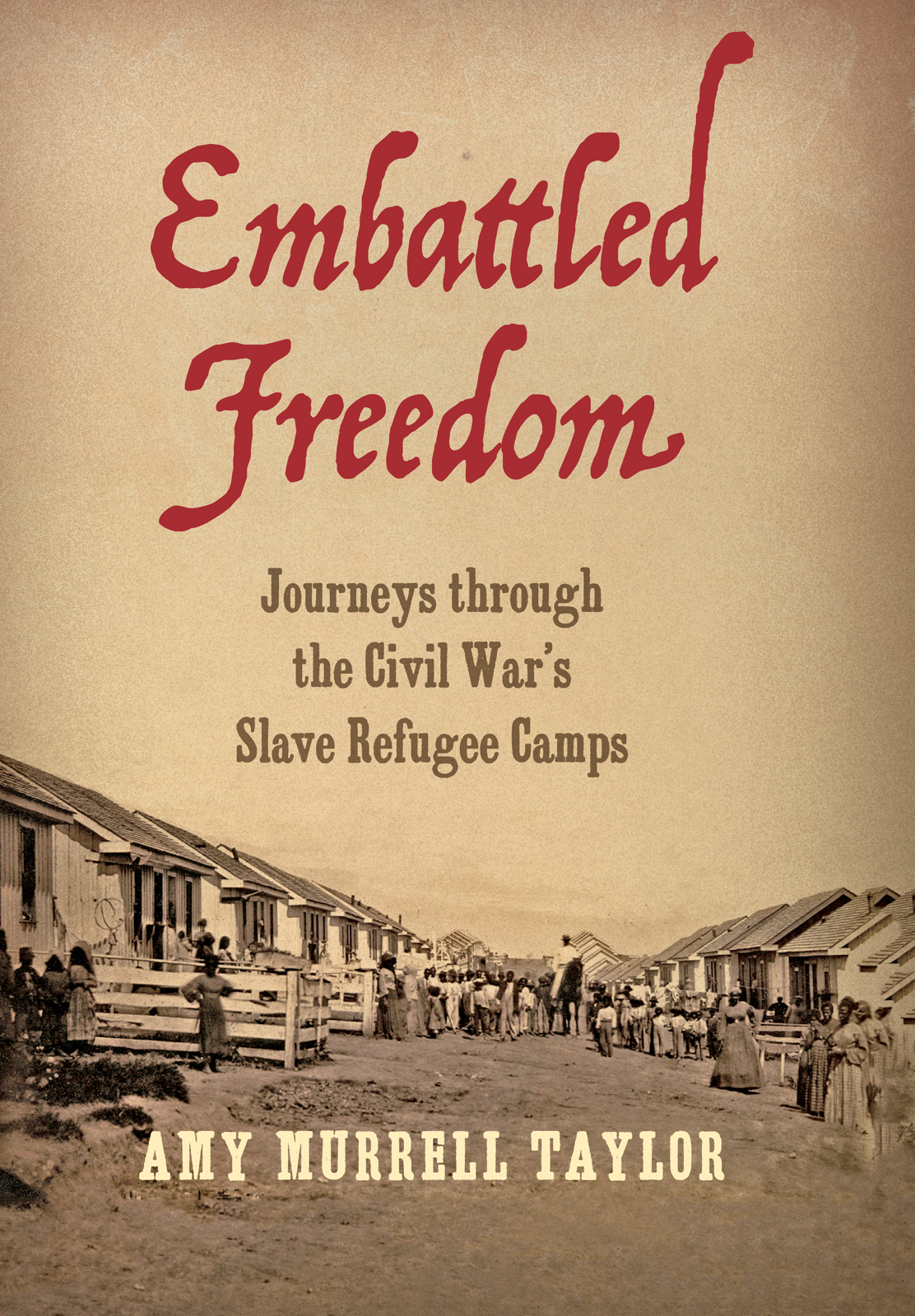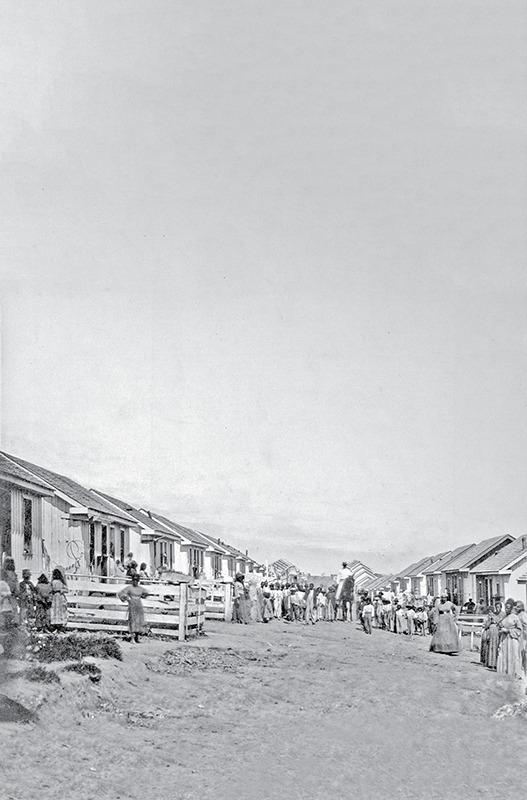This landmark series interprets broadly the history and culture of the Civil War era through the long nineteenth century and beyond. Drawing on diverse approaches and methods, the series publishes historical works that explore all aspects of the war, biographies of leading commanders, and tactical and campaign studies, along with select editions of primary sources. Together, these books shed new light on an era that remains central to our understanding of American and world history.
Embattled Freedom

Journeys through the Civil Wars Slave Refugee Camps

AMY MURRELL TAYLOR
THE UNIVERSITY OF NORTH CAROLINA PRESS
Chapel Hill
This book was published with financial support from the University of Kentucky College of Arts and Sciences and Department of History and with the assistance of the John Hope Franklin Fund of the University of North Carolina Press.
2018 Amy Murrell Taylor
All rights reserved
Manufactured in the United States of America
Designed by Jamison Cockerham
Set in Arno, Trattatello, Scala Sans, Archive Antiqua
by Tseng Information Systems, Inc.
Front cover: Camp Nelson Refugee Home, courtesy of the Camp Nelson Photographic Collection, Special Collections Research Center, University of Kentucky. Back cover: the Mill Creek settlement in 1864, courtesy of the Library of Congress.
The University of North Carolina Press has been a member of the Green Press Initiative since 2003.
LIBRARY OF CONGRESS CATALOGING-IN-PUBLICATION DATA
Names: Taylor, Amy Murrell, author.
Title: Embattled freedom : journeys through the Civil Wars slave refugee camps / Amy Murrell Taylor.
Other titles: Civil War America (Series)
Description: Chapel Hill : University of North Carolina Press, [2018] | Series: Civil War America | Includes bibliographical references and index.
Identifiers: LCCN 2018020213 | ISBN 9781469643625 (cloth : alk. paper) | ISBN 9781469643632 (ebook)
Subjects: LCSH: United StatesHistoryCivil War, 18611865African Americans. | SlavesEmancipationUnited States. | United StatesHistoryCivil War, 18611865Refugees. | Refugee campsSouthern StatesHistory19th century. | United States. ArmyHistoryCivil War, 18611865.
Classification: LCC E453 .T18 2018 | DDC 973.7/115dc23
LC record available at https://lccn.loc.gov/2018020213
for Scott
contents
figures
maps
acknowledgments
The years I spent learning about the lives and the struggles of those seeking freedom in the 1860s have made me ever more grateful for the vast network of support that surrounds me today. To begin, my research would not have been possible without fellowships from the National Endowment for the Humanities and the American Council of Learned Societies. These funding programs allowed me to bury myself in the National Archives for two years and to let my curiosity take me in time-consuming, but ultimately rewarding directions. I am also grateful for the financial support provided by a Faculty Research Award Program Grant from the University at Albany, an Individual Development Awards Program Grant from United University Professions and the State University of New York, and an associate professor course release from the College of Arts and Sciences, University of Kentucky.
A crucial part of my research involved visiting the places described in these pages, and I want to thank a number of people who helped me envision where refugee camps once stood. In Hampton, Virginia, members of the Contraband Historical Society welcomed me to one of their meetings, and Phillip Adderley generously gave me a tour that made everything clearer. I am also thankful for my conversations with the late Gerri Hollins and with Thulani Davis, both descendants of refugees who lived in and around Fort Monroe, and for the research shared with me by Joan Charles. In Kentucky, an email to Stephen McBride, director of interpretation and archaeology at Camp Nelson, resulted in an in-depth tour, many suggestions, and after I moved to Kentucky, an ongoing conversation about the site that continues to this day. I was also fortunate to get to know Joseph Brent of Mudpuppy and Waterdog, Inc., whose work to preserve and interpret Helenas Civil War history was crucialand helped me to plot my fieldwork in Arkansas.
Many people along the way shared their knowledge of archival sources and turned what I thought was a deeply buried subject into one that nearly overwhelmed me with its abundance. I am not sure how to begin thanking Leslie Rowland, who invited me to the offices of the Freedmen and Southern Society Project and shared the projects extensive indexes; she also gave me my first introduction to the complex organizational scheme of the notorious Record Group 393. At the National Archives and Records Administration in Washington, D.C., I benefited from the assistance of Trevor Plante, and at the NARAs now-closed regional branch in Pittsfield, Massachusetts, from that of Tyrone Keels. My research in Virginia was aided by the assistance of Donzella Maupin and Andreese Scott of the Hampton University Archives; David Johnson of the Casemate Museum; and Graynell Drummond and Bethany Austin of the Hampton History Museum. I also owe a big thanks to Chris Densmore of the Friends Historical Library at Swarthmore College; Anne Thomason and Tom Hamm at the Friends Collection at Earlham College; Jacob Lee and James Holmberg at the Filson Historical Society; Jaime Burton at Berea College; and Shane Williams at the Helena Museum. Thanks also to the staff of Congressman Paul Tonko for tracking down two pension records that had not yet been deposited in the National Archives.
Early on in my research I received a series of envelopes in the mail from the extraordinarily generous Michael Parrish, each filled with photocopies of sources he thought (correctly) would assist me. I am grateful for his thoughtfulness and collegiality. Other colleagues who kindly shared photocopies and leads on sources are Bill Andrews, Peter Carmichael, John Coski, David Hochfelder, Terry Johnston, Patrick Lewis, Aaron Sheehan-Dean, Daniel Sutherland, and Monica Tetzlaff. Several research assistants came to my aid at critical points too. I am thankful for the hard work of Jennifer Thompson Burns and Jasmine Bumpers at the University at Albany and Ruth White at the University of Kentucky. Rose Buchanan of North Carolina State University also lent a hand when I could not travel to Raleigh. Later on in the project I got a big boost from Jeff Levy and Dick Gilbreath at the Pauer Center for Cartography & GIS at the University of Kentucky, who took my unfinished maps and made them useful and publishable. For earlier iterations of the maps, I want to thank Kati Engel and Marilyn Nickels, both formerly of the National Park Service.


